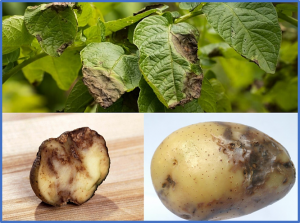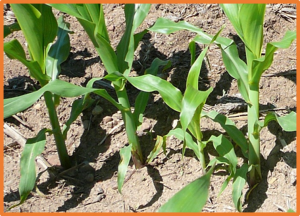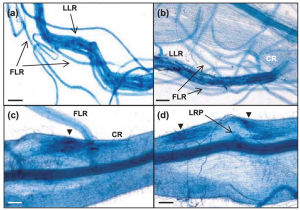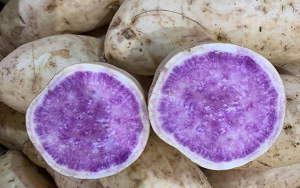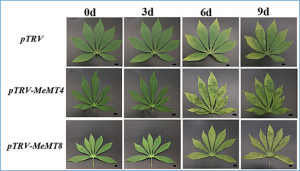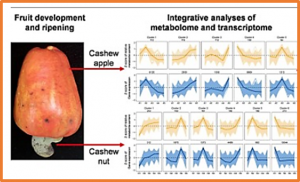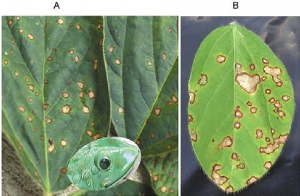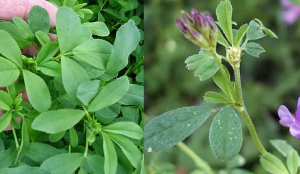To combat pathogen infection, plants employ local defenses in infected sites and elicit systemic acquired resistance (SAR) in distant tissues. MicroRNAs have been shown to play a significant role in local defense, but their association with SAR is unknown. In addition, no such studies of the interaction between potato and Phytophthora infestans have been reported. We investigated the role of miR160 in local and SAR responses to P. infestans infection in potato.
Lead (Pb) is one of the most toxic heavy metal pollutants, which can penetrate plant cells via root absorption and thus cause irreversible damages to the human body through the food chain. To identify the key gene responsible for Pb tolerance in maize, we performed a trait-associated co-expression network analysis at a genome-wide level, using two maize lines with contrasting Pb tolerances.
Root hairs are tubular outgrowths generated by the root epidermal cells. They effectively enlarge the soil-root contact area and play essential roles for nutrient and water absorption. Here, in this study, we demonstrated that the Oryza sativa UDP-glucose 4-epimerase 1-like (OsUGE1) negatively regulated root hair elongation and was directly targeted by Oryza sativa growth regulating factor 6 (OsGRF6). Knockout mutants of OsUGE1 using CRISPR-Cas9 technology showed longer root hairs than those of wild type.
Two-component system (TCS), which comprises histidine kinases (HKs), histidine phosphotransfer proteins (HPs), and response regulators (RRs), plays essential roles in regulating plant growth, development, and response to various environmental stimuli. TCS genes have been comprehensively identified in various plants, while studies on the genome-wide identification and analysis of TCS in sweet potato were still not reported. Therefore, in this study, a total of 90 TCS members consisting of 20 HK(L)s, 11 HPs, and 59 RRs were identified in the genome of Ipomoea batatas.
Cassava (Manihot esculenta Crantz) is widely planted in tropical and several subtropical regions in which drought, high temperatures, and other abiotic stresses occur. Metallothionein (MT) is a group of conjugated proteins with small molecular weight and rich in cysteine. These proteins play a substantial role in response to physiological stress through the regulation of reactive oxygen species (ROS). However, the biological functions of MT genes in cassava are unknown.
Cashew nut is a popular food around the world. The high-resolution profiles and dynamics of metabolomes in cashew fruits are poorly understood till now. In this study, we analyzed the temporal metabolome of cashew nut via a non-targeted method based on UHPLC-Q-Exactive-MS, and analyzed that of cashew apple via a widely targeted method based on UHPLC-QTRAP-MS/MS (MRM).
Soybean is one of the most economically important crops in the United States. A primary end-use of soybean is for livestock feed. Therefore, genetic improvement of seed composition is one of the most important goals in soybean breeding programs. Sucrose is desired in animal feed due to its role as an easily digestible energy source. An elite soybean line was irradiated with fast neutrons and the seed from plants were screened for altered seed composition with near-infrared spectroscopy (NIR)
Frogeye leaf spot (FLS) causes severe yield loss in soybean and has been found in several countries worldwide. Therefore, it is necessary to select and utilize FLS-resistant varieties for the management of FLS. In the present study, 335 representative soybean materials were assessed for partial resistance to FLS race 7. Quantitative trait nucleotide (QTN) and FLS race 7 candidate genes were identified using genome-wide association analysis (GWAS) based on a site-specific amplified fragment sequencing (SLAF-seq) approach.
Piper nigrum, also known as black pepper, is an economically and ecologically important crop of the genus Piper. It has been titled as the king of spices due to its wide consumption throughout the world. In the present investigation, the chloroplast genome of P. nigrum has been assembled from a whole genome sequence by integrating the short and long reads generated through Illumina and PacBio platforms, respectively. The chloroplast genome was observed to be 161,522 bp in size, having a quadripartite structure with a large single copy (LSC) region of 89,153 bp and a small single copy (SSC) region of 18,255 bp separated by a copy of inverted repeats (IRs), each 27,057 bp in length.
Yield is one of the most important target traits in alfalfa breeding; however, yield is a complex trait affected by genetic and environmental factors. In this study, we used multi-environment trials to test yield-related traits in a diverse panel composed of 200 alfalfa accessions and varieties. Phenotypic data of maturity stage measured as mean stage by count (MSC), dry matter content, plant height (PH), biomass yield (Yi), and fall dormancy (FD) were collected in three locations in Idaho, Oregon, and Washington from 2018 to 2020.


 Curently online :
Curently online :
 Total visitors :
Total visitors :
